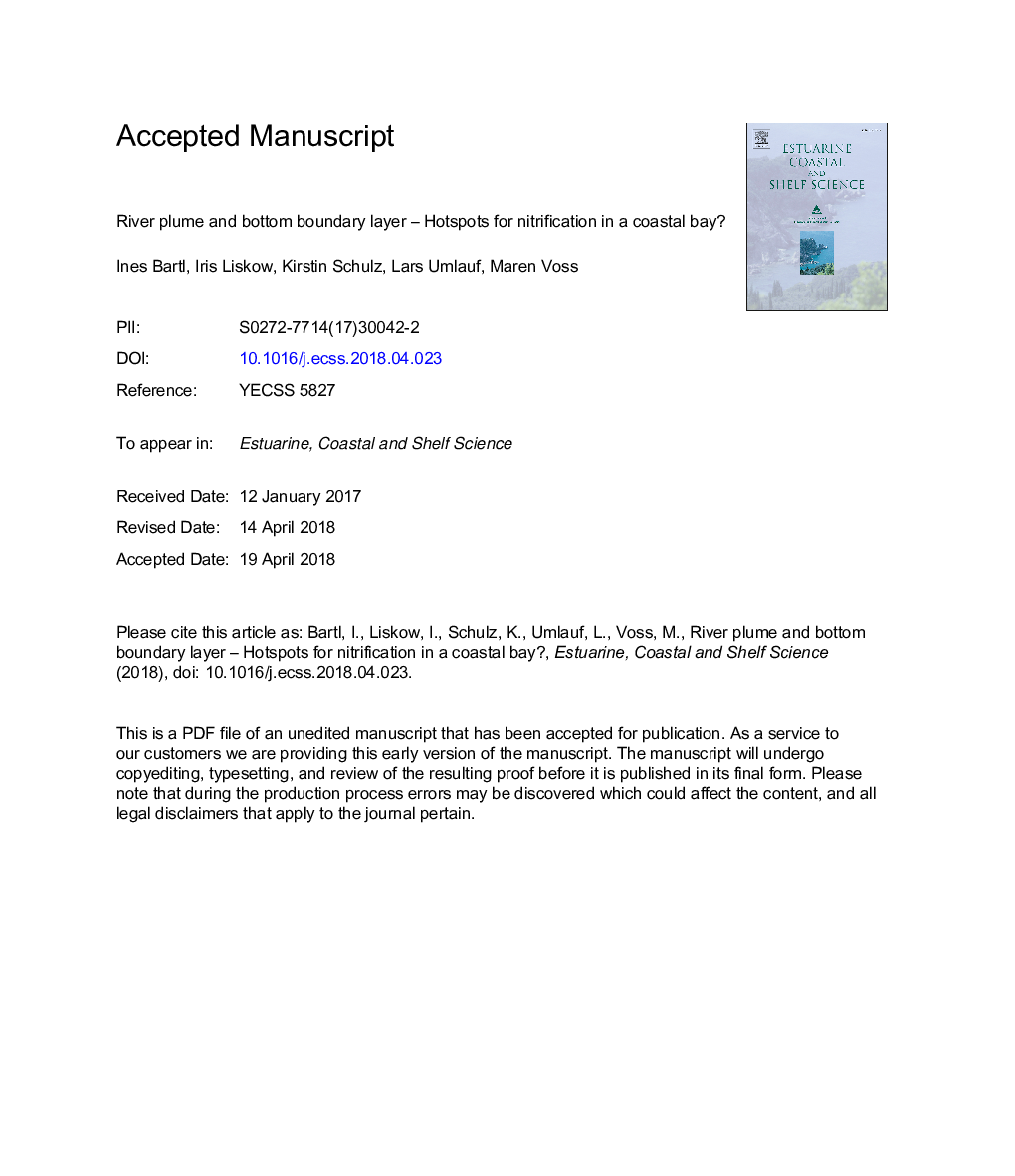| کد مقاله | کد نشریه | سال انتشار | مقاله انگلیسی | نسخه تمام متن |
|---|---|---|---|---|
| 8884743 | 1626594 | 2018 | 50 صفحه PDF | دانلود رایگان |
عنوان انگلیسی مقاله ISI
River plume and bottom boundary layer - Hotspots for nitrification in a coastal bay?
ترجمه فارسی عنوان
لایه مرزی رودخانه و لایه مرزی پایین - نقاطی برای نیتریفیکاسیون در خلیج
دانلود مقاله + سفارش ترجمه
دانلود مقاله ISI انگلیسی
رایگان برای ایرانیان
کلمات کلیدی
موضوعات مرتبط
مهندسی و علوم پایه
علوم زمین و سیارات
زمین شناسی
چکیده انگلیسی
Coastal zones, impacted by major rivers, comprise distinct environments, such as river plumes and bottom boundary layers (BBL). These environments are characterized by high nutrient concentrations and high microbial activities and thus offer favourable conditions for nitrification, a key process in the coastal nitrogen cycle. Because nitrification provides substrates for both primary production and denitrification, elucidation of its magnitude and regulation is crucial for understanding the nitrogen cycle in coastal zones. During three research cruises covering three seasons, the enhancement of nitrification rates and their regulation by environmental variables, including salinity, temperature, oxygen, and inorganic and organic nitrogen were investigated in river plume and BBL of the Vistula Estuary (Bay of Gdansk, Southern Baltic Sea). Nitrification rates were not enhanced in the river plume (39â¯Â±â¯38â¯nmolâ¯Lâ1â¯dâ1) compared to coastal surface water (45â¯Â±â¯18â¯nmolâ1â¯dâ1) but the relationship to salinity and particulate organic nitrogen changed, suggesting different regulatory mechanisms along the salinity gradient. Nitrification rates in the BBL covered a range from 1 to 227â¯nmolâ¯Lâ1 dâ1 and did not differ seasonally. NH4+ turnover was dominated by assimilation into biomass in summer and by nitrification in winter and spring. In summer, rates were only slightly enhanced in the BBL and clearly related to particulate organic nitrogen and carbon concentrations, indicating particle attachment of nitrifiers and close coupling to organic matter degradation. The lack of correlations between nitrification and environmental variables in winter and spring suggested other regulatory mechanisms than in summer. Short-term changes, including the oxygenation of anoxic deep offshore water and particle resuspension clearly enhanced nitrification and further highlighted the variable mechanisms regulating nitrification in the Bay of Gdansk. Although nitrification rates did not greatly differ between seasons or water layers, the variability in regulatory mechanisms and the seasonal switch in NH4+ recycling are likely to have implications on coastal N-turnover and hence on the filter function of coastal waters.
ناشر
Database: Elsevier - ScienceDirect (ساینس دایرکت)
Journal: Estuarine, Coastal and Shelf Science - Volume 208, 31 August 2018, Pages 70-82
Journal: Estuarine, Coastal and Shelf Science - Volume 208, 31 August 2018, Pages 70-82
نویسندگان
Ines Bartl, Iris Liskow, Kirstin Schulz, Lars Umlauf, Maren Voss,
